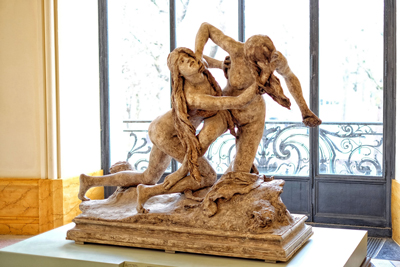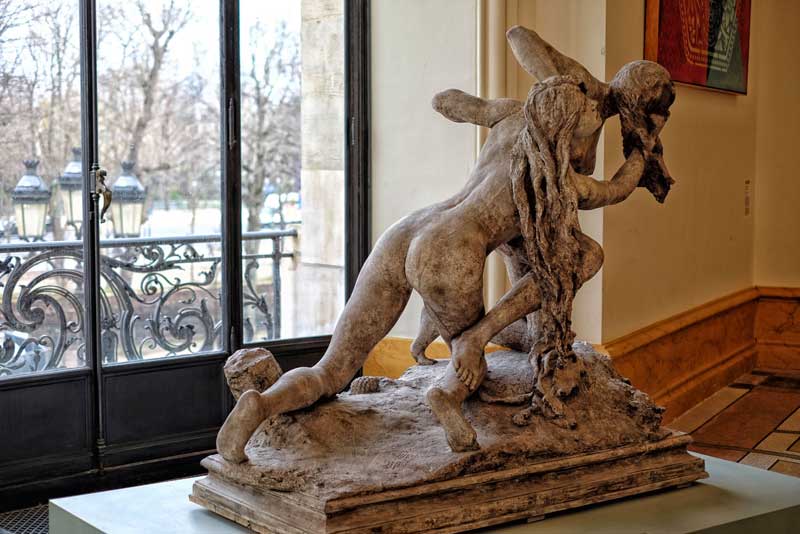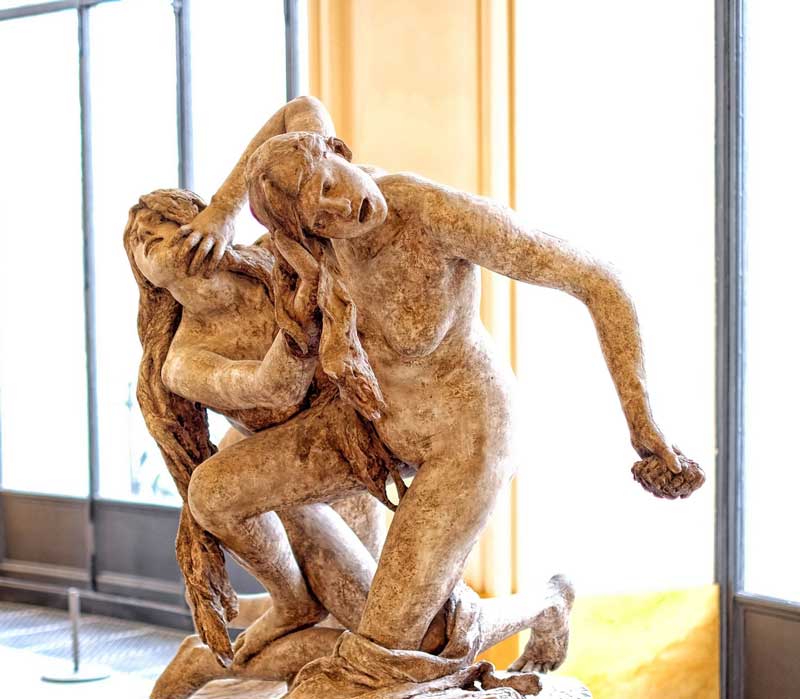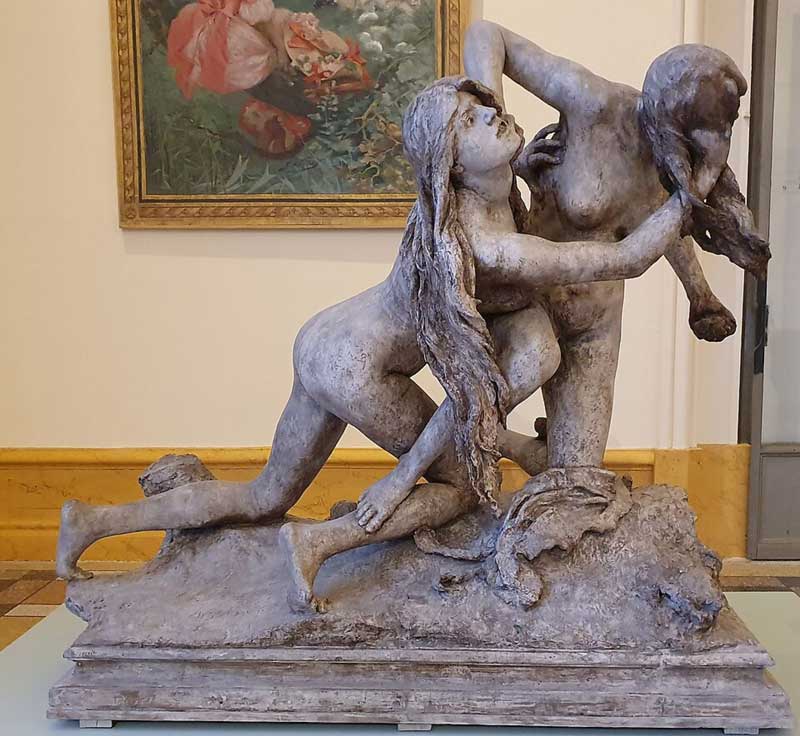
The Bacchantes, created by Alexandre Falguière, a 19th-century French sculptor and painter, depicts two nude young women fighting like two ragpickers in the middle of the Jean-Roulland space of the Calais Museum of Fine Arts in France, right in front of visitors. The fighting women in the sculpture represent two young priestesses of the Roman god Bacchus, known as Bacchantes from Roman mythology, associated with wine, unbridled merrymaking, and madly elated worship of Bacchus, often involving physical manifestations like dancing, singing, or speaking in tongues, sometimes called the language of the angels.

Alexandre Falguière, in his sculpture, titled The Bacchantes, captures a moment of conflict and struggle between the two women, two frenzied and ecstatic female followers of Bacchus, engaged in a violent nature of rituals of the Bacchic revels, believed to be the means of achieving a state of ecstatic possession and connecting with the god, which is a central element in the worship of Bacchus. Bacchus, the Roman god of grape harvest and wine, intoxication and revelry, vegetation and fertility, is associated with madness, religious ecstasy, and theatre, and is also known for his ability to influence both wild animals and humans alike, bringing frantic joy and frenzy to the soul. Interestingly, the term Bacchantes is broadly used to refer to the young priestesses of Bacchus, or the drunken and frenzied female revellers, often involved in wild dancing, as if in a trance. Apart from that, the Bacchantes are also known to be involved in consuming wine and raw flesh from animals sacrificed to the Roman god Bacchus.

Born in Toulouse, a city in southern France in 1831, Alexandre Falguière attended the Académie de France à Rome until 1865, when he won the Grand Prix de Rome, a French scholarship for arts students in 1859. Later, he was also awarded the coveted Medal of Honour at the Paris Salon in 1868, and earned wide acceptance as a sculptor, receiving several commissions for installing monuments in public squares and buildings. Although inspired by classical mythology, his amazing sculpture, called the Bacchantes, displaying the hand-to-hand fight between two nude females, is seemingly an unusual sculpture. However, he neatly incorporated a sense of naturalism in it by employing a dynamic and gyrating composition, drawing the viewer's eye around the piece through the extended limbs and the overall movement of the figures. Known for its dynamic composition, the sculpture exemplifies the French Beaux-Arts style, characterised by naturalistic forms and fluid qualities, which was popular in American sculpture at the turn of the 20th century.
